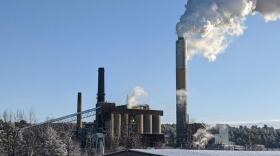New England's electrical grid is working overtime to keep up with power demand during this record cold spell – but analysts say recent upgrades to the system's safety net are paying off.
Dan Dolan is president of the New England Power Generators Association. He says his members learned their lesson from 2014's Polar Vortex, when fuel prices spiked as power suppliers scrambled to meet demand.
New penalties for failing to meet those needs don’t go into effect until this summer, but Dolan says this winter is proving to be a good trial run for post-Polar Vortex upgrades – especially on Tuesday, as people returned from the holidays and demand begins to rise.
“It’s our first really normal workday since this cold snap has begun,” he says. “Yet again, we’re seeing prices in line with what we expected, and no abnormal events on the system.”
An abnormal event would be a shortage of reserve fuels, or an inability to bring a back-up generation source online quickly.
This year, Dolan says improvements to those back-up systems are keeping prices and the power supply steady.
For example, ISO-New England data shows the grid is leaning more on less-used fossil fuels such as coal and oil as the cold wears on, instead of depleting its natural gas reserves.
"That's exactly why we have them around, is for exactly historic periods of times like this, to ensure that enough resources are on the system,” he says.
He expects the grid to keep up that stability for the rest of the cold snap -- even as snow in the forecast this weekend draws utilities’ attention to the resiliency of their power lines as well.








